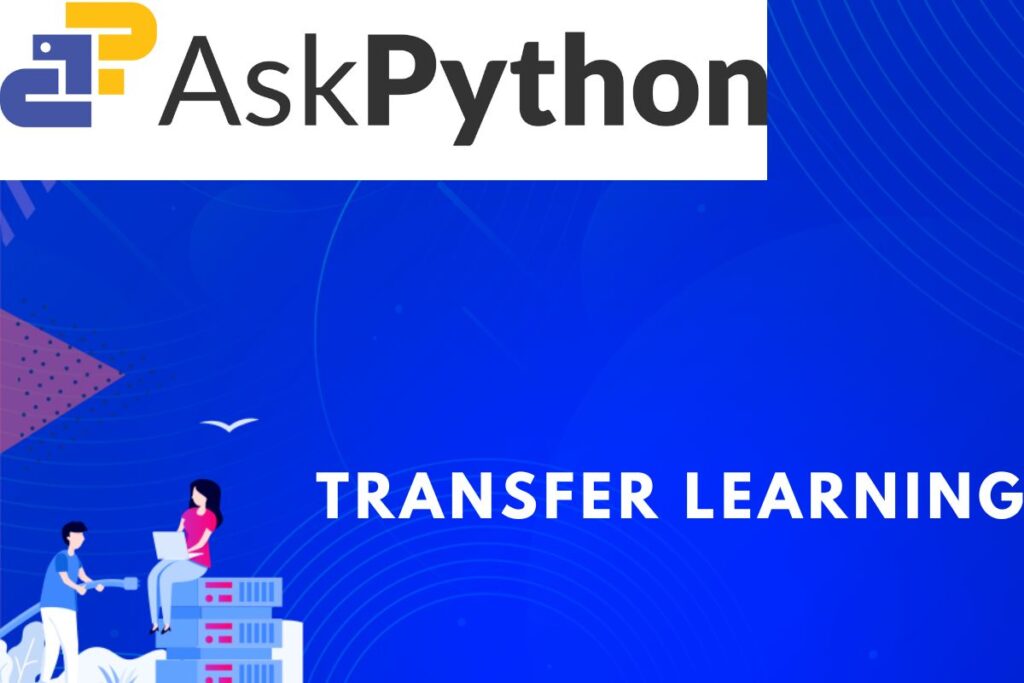In the domain of Machine Learning, there is a boom in Transfer Learning. Let us understand Transfer learning and understand what is all this hype about.

Understanding Transfer Learning
Gathering new data for a completely new task and training a new model from scratch can be challenging a lot of times. Transfer Learning is a subset of Machine Learning in which a new model is trained upon the characteristics and qualities of an existing model which addresses a similar problem.
This method of working saves time and computational energy as developing a completely new model from scratch would be very tedious in various use cases, so why not try and incorporate some of the useful characteristics from existing models, making our work easy as developers? Transfer Learning has become so handy to use that it is very rare to find an image-processing or Natural-language processing task being performed from scratch.
Some use cases of Transfer Learning Could be as follows:
1. The limited data were available for the new model to be trained.
2. Plenty of data is available for the fresh model to be trained.
In both the above cases developing a new model is not feasible, as when there is insufficient data, training a model on it would lead to inaccurate results and over-fitting or under-fitting of that particular model.
Similarly, in the case of large amounts of data, doing so would require a very long time and consume too much computational energy. Hence, transfer learning proves to be a lifesaver in such situations.
How does it Work?
A machine learning model that primarily works on identifying characteristics from a set of data viz. Images are a front-runner for transfer learning. Almost the entire model can be kept aside, and only a part of that algorithm can be retrained and used as per the requirements of our project. The choice of the algorithm, or a specific part of it, is completely dependent on the type of the new dataset that we are working on and its relevance with the already existing model.
In theory, it imparts maximum knowledge from a pre-trained model to a newly developed model. Extra layers of detailing can be added for more accurate knowledge to be imparted in the new model, allowing it to perform the given task. Transfer learning involves using previously developed models such as imagenet, mobilenet, mobilenetv2, etc.
It then involves fine-tuning the parameters of these models. It helps these existing models to adapt to the requirements of the new problem and, in a way, generalize the existing model to perform certain specific tasks on a given data set.

Advantages and Uses
Firstly it accelerates the learning; since the model has only a few new things to learn, its algorithm can produce high-caliber results. It is analogous to a person already knowing how to ride a bicycle and the same person trying to learn how to ride a scooter. Learning how to ride a scooter would be easy by using the experience and knowledge gained in the process of learning how to ride a bicycle.
Huge amounts of labeled training data sets are not required. A model previously trained on a task with plenty of data is well-equipped to handle limited data of similar characteristics.
The model can be fine-tuned to give it a more generalized nature to solve other similar problems.
Strategies of Transfer Learning
Transfer learning as a whole is a broad field that encompasses a wide range of strategies and techniques that one can use based on certain factors, such as the amount of available data, the type of problem being solved, and so on. After studying the underlying machine learning model that is used for transfer learning, it can be classified as follows:-
1. Inductive Learning
2. Unsupervised Transfer Learning
3. Transductive Transfer Learning
Applications of Transfer Learning
The areas in which transfer learning can be applied are:
Natural Language Processing [NLP] NLP is referred to a system or a computer program that is capable of understanding text and audio that are present in human language. Some examples of NLP are Alexa, Siri, etc.
It is also known as CV, which is another type of program that can capture data through visual inputs given by a hardware source such as a camera. The software program must be integrated with the camera to serve the given functionality.
These networks are important in deep learning as they are tailored and built to simulate and perform the functions that a human brain can perform. Models of neural networks are extremely heavy weight and require large amounts of computation strength.
All the above, mentioned domains are soo huge when it comes to developing them in practice in a project that they might drain out any possible hardware and software. Hence transfer learning is a solution that reduces the workload while developing models for the same.
Future of Transfer Learning
Transfer Learning and its features are useful in a wide range of fields, which shows its potential to take over the world in the coming future. Transfer learning will be one of the driving forces to distribute various machine learning, deep learning models across different domains and use cases.
The minimal requirements to create new algorithms and models have brought a game-changing turn in the domain of Machine Learning. Transfer Learning will give businesses a new direction to carry out business even in the lack of labeled data. Overall, Transfer Learning promises to be a very robust and a very reliable technology to entrust one’s business on it.
References
A Gentle Introduction to Transfer Learning for Deep Learning
Transfer Learning for Machine Learning – How Does Transfer Learning Work ?
What is Transfer Learning and Why Does it Matter? – Advantages of Transfer Learning
